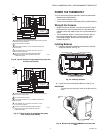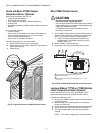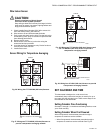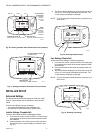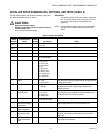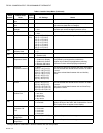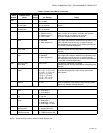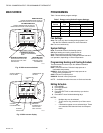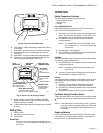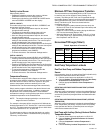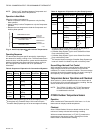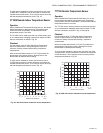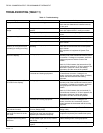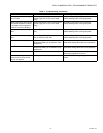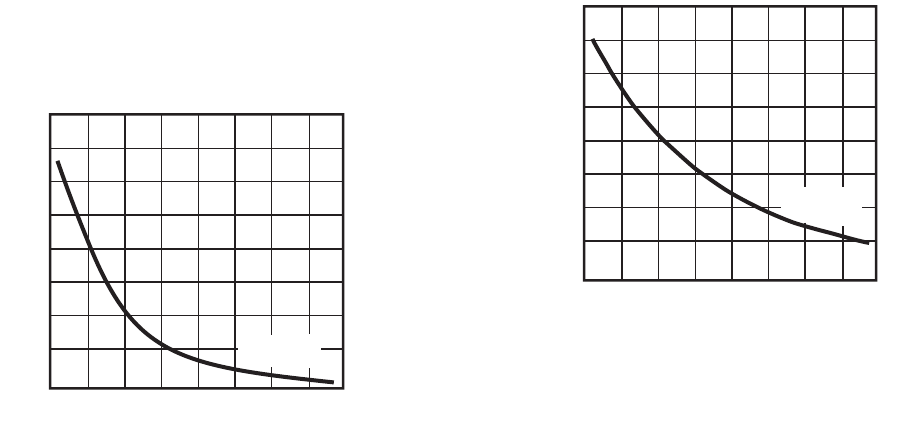
TB7220 COMMERCIALPRO™ PROGRAMMABLE THERMOSTAT
21 63-2635—03
To verify sensor resistance, remove one wire from one of the
C7089U 60-in. leadwires. Use an ohmmeter to measure the
resistance across the sensor. Then compare sensor accuracy
with the temperature/resistance curve in Fig. 42.
C7189U Remote Indoor Temperature Sensor
Operation
When installed with Thermostat ISU 0340 set to 3, the remote
inside temperature is displayed on the Thermostat Home
Screen as Inside Temperature. The thermostat internal
temperature sensor is not used.
The C7189U can be used to provide one remote sensor input
or as a temperature averaging network with multiple C7189U
Sensors connected, as shown in Fig. 29.
Checkout
For best results, allow C7189U Wall Mount Temperature
Sensor to absorb the air moving through the room for a
minimum of twenty minutes before taking a resistance
measurement.
With an accurate thermometer (±1°F [0.5°C]) measure the
temperature at the sensor location, allowing time for the
thermometer to stabilize before reading.
To verify sensor resistance, remove one wire from one of
C7189U wiring terminals. Use an ohmmeter to measure the
resistance across the sensor. Then compare sensor accuracy
with the temperature/resistance curve in Fig. 42.
Fig. 42. 10K ohm sensor resistance versus temperature.
T7770A Remote Temperature Sensor
Operation
When installed with Thermostat ISU 0340 set to 3 or 4, the
remote inside temperature is displayed on the Thermostat
Home Screen as Inside Temperature. The thermostat internal
temperature sensor is not used.
The T7770A can be used to provide one remote sensor input
or as a temperature averaging network with multiple T7770A
Sensors connected, as shown in Fig. 26 through 28.
Checkout
For best results, allow T7770A Wall Mount Temperature
Sensor to absorb the air moving through the room for a
minimum of twenty minutes before taking a resistance
measurement.
With an accurate thermometer (±1°F [0.5°C]) measure the
temperature at the sensor location, allowing time for the
thermometer to stabilize before reading.
To verify sensor resistance, remove one wire from one of the
wiring terminals. Use an ohmmeter to measure the resistance
across the sensor. Then verify the sensor accuracy with the
temperature/resistance in Fig. 43.
Fig. 43. 20K ohm sensor resistance versus temperature.
TEMPERATURE (DEGREES)
o
F
-40
-20 0 20 40
60
80
100
120
-20
-30
-40
-10
40
RESISTANCE (OHMS)
10K OHM AT
77
o
F (25
o
C)
220K
190K
160K
130K
100K
90K
60K
30K
o
C
M22823
0
10 20
30
50
0K
TEMPERATURE (DEGREES)
o
F
30
40 50 60 70
80
90
100
110
0
10
20
30
40
RESISTANCE (OHMS)
20K OHM AT
77
o
F (25
o
C)
80K
70K
60K
50K
40K
30K
20K
10K
o
C
M5874A



